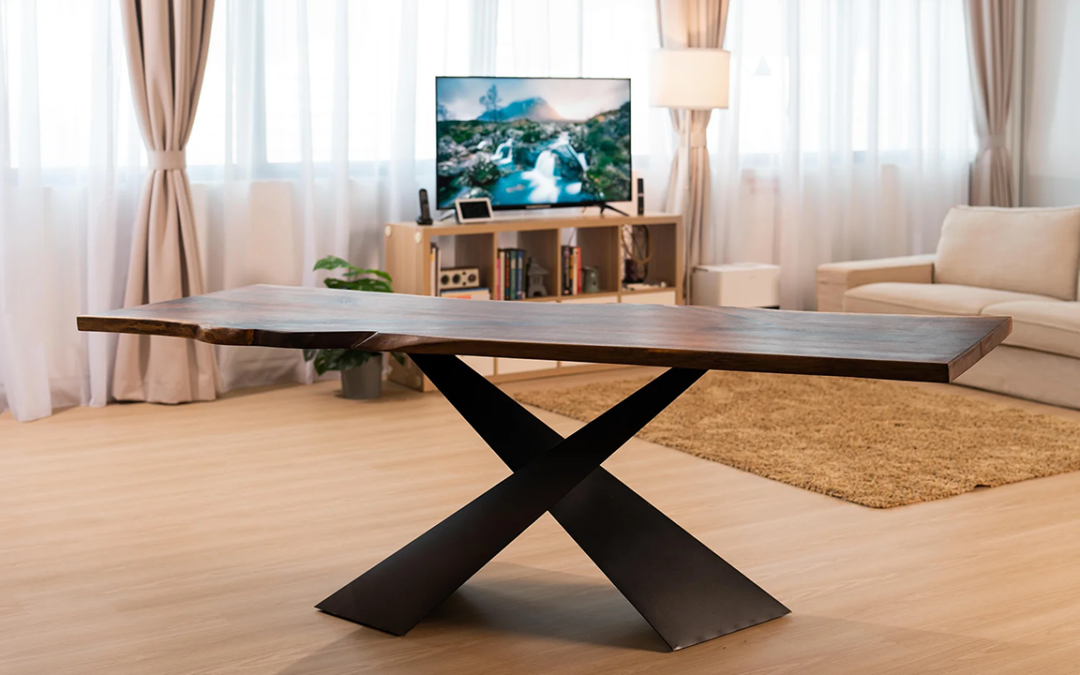A Thorough Consider Eating Table Leg Styles: Finding the Suitable Suit
Selecting the ideal table leg design is vital for both aesthetic appeal and useful capability. Conventional 4 legs use timeless elegance and stability, while the stand base offers enhanced legroom and a modern appearance. For those with larger tables, trestle legs make sure sturdy assistance, whereas hairpin legs present a mid-century modern-day ambiance with their minimal style. The x-shaped legs mix contemporary style with enhanced security. Each of these choices brings one-of-a-kind benefits, making the selection greater than simply an issue of choice. Check out additionally to discover which design perfectly enhances your eating area and way of living.
Conventional Four Legs
Among the various sorts of table leg styles, the traditional four-leg design stays a classic selection for several families. This traditional setup offers an unified blend of performance and visual appeals, making it a perennial fave. 4 legs provide well balanced support, making sure the table stays steady and efficient in birthing significant weight. This is especially advantageous for homes that often organize large gatherings or utilize their eating table for multiple functions, such as work or crafting.
From a visual viewpoint, the typical four-leg layout can be conveniently adapted to numerous interior styles. Whether crafted from timber, steel, or a mix of materials, these legs can be intricately carved, smooth and minimalistic, or anything in between. Their flexibility allows them to match both rustic and modern setups flawlessly.
Additionally, the uncomplicated framework of the four-leg design facilitates ease of motion and positioning within an area. Unlike even more complicated bases, this design decreases blockages, providing sufficient legroom for restaurants. In summary, the standard four-leg table leg style weds withstanding sophistication with functional functionality, making it an astute selection for those seeking both type and feature in their eating furniture.
Stand Base
Typically commemorated for its classy and space-efficient layout, the stand base is a prominent alternative to the traditional four-leg arrangement in table leg designs. This distinctive base commonly includes a single central column sustaining the tabletop, which can vary in form, from ornately carved wood to streamlined, modern metal. Among the primary advantages of the stand base is its capability to make the most of legroom and seating versatility. Without corner legs, restaurants are paid for higher flexibility of movement, making it a suitable choice for round and oval tables that advertise more intimate and comprehensive gatherings.
Additionally, the stand base's main support can handle substantial weight, permitting for the use of much heavier table tops, such as marble or thick wood. This strength combined with its visual convenience makes the pedestal base a prominent option in both traditional and contemporary interior setups. It can effortlessly integrate with various style styles, from timeless elegance to minimalist modernity. The main column itself provides a canvas for intricate designs and artistic expressions, including an aspect of aesthetic passion below the table. In recap, the pedestal base integrates capability with style, making it an improved and useful alternative for varied eating environments.
Trestle Legs
Trestle legs offer a robust and classic structure for dining tables, defined by their straight cross-bracing and durable support beams. Stemming from middle ages times, this style has evolved yet preserved its necessary structure, making it a perennial favorite in both traditional and modern setups. The central trestle light beam, frequently sustained by 2 or more vertical articles, supplies extraordinary security, enabling for larger table sizes without the demand for added legs.
A substantial advantage of trestle leg tables is the ample legroom they supply. Unlike tables with four edge legs, the absence of blockages at the table's sides provides unblocked space for chairs and diners, enhancing comfort and accessibility. This makes trestle tables excellent for suiting larger events, whether in an eating area or a banquet hall.
The aesthetic flexibility of trestle legs is noteworthy. Offered in a variety of products such as wood, steel, and composite, they can be ended up to complement a vast array of interior styles. From rustic farmhouse to smooth modern-day designs, trestle legs can be personalized to fit private preferences. Their long-lasting appeal and practical benefits make trestle legs an engaging option for those seeking both design and practicality in their table.
Hairpin Legs

The appeal of hairpin legs depends on their simplicity and adaptability - dining room table legs. Offered in a variety of materials, including steel and brass, they can be ended up in various shades to enhance various indoor designs. Whether coupled with a rustic wood tabletop or a modern glass surface area, hairpin legs easily blend read this post here capability with a touch of vintage appeal
Durability is another notable feature of barrette legs. In spite of their fragile look, these legs are crafted to birth considerable weight, ensuring the table remains stable and safe and secure. In addition, they are reasonably very easy to mount, making them a prominent option for do it yourself fanatics and specialist furnishings makers alike.
X-Shaped Legs

Created from materials such as steel, wood, or a mix of both, X-shaped legs can be customized to match various layout preferences. Steel legs usually lend a sleek and industrial feeling, suitable for loft-style homes and modern-day dining rooms.
Furthermore, the engineering behind X-shaped legs makes certain also weight circulation, minimizing the danger of wobbling and improving resilience. This makes them specifically appropriate for larger table that need extra assistance. In significance, X-shaped legs mix sensible engineering with modern aesthetic appeals, making them a classic choice for varied dining environments.
Conclusion
An extensive understanding of eating table leg styles discloses the distinct characteristics and advantages of each layout. Trestle legs ensure durable assistance for larger tables, and hairpin legs introduce a mid-century contemporary aesthetic.